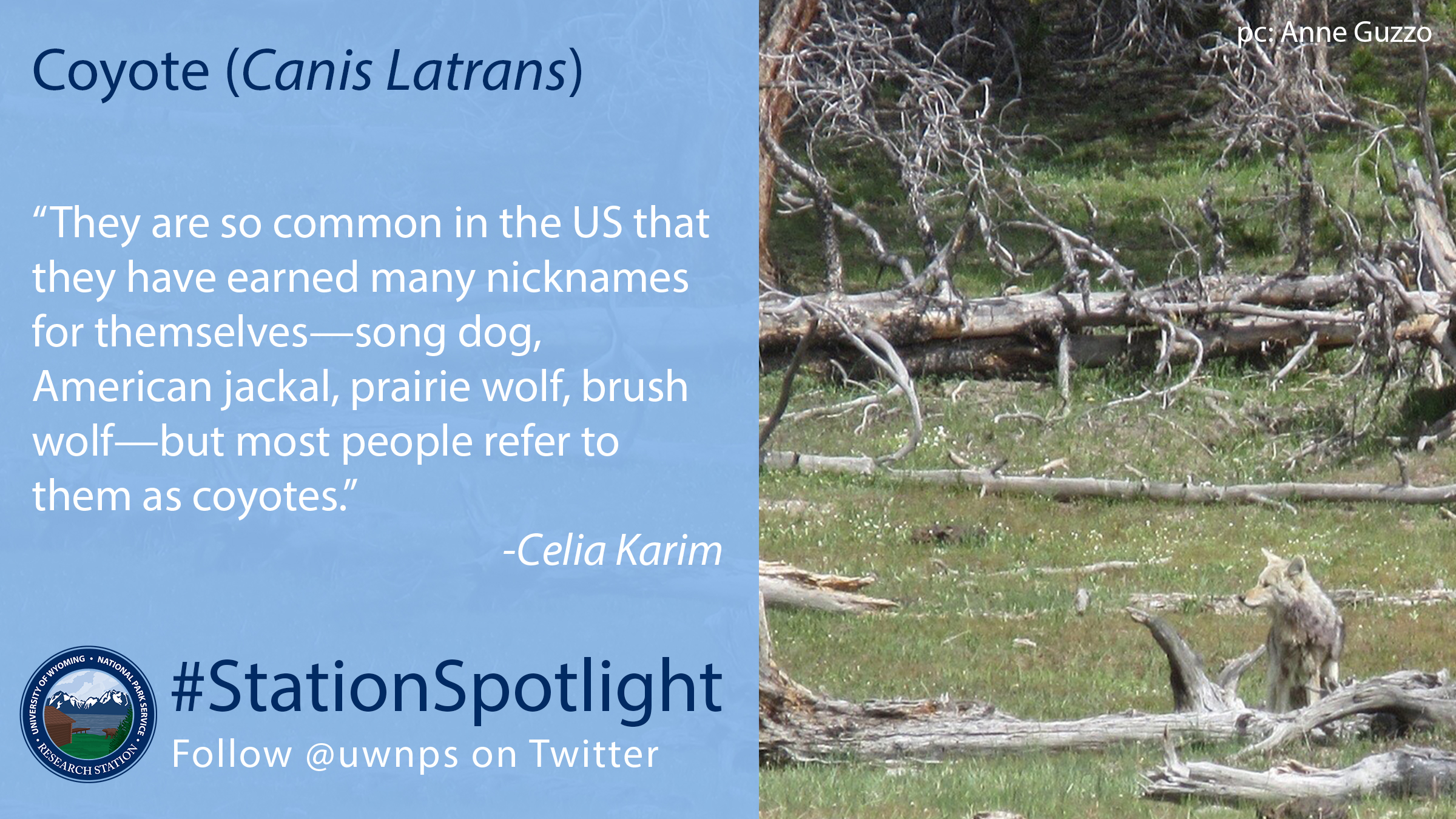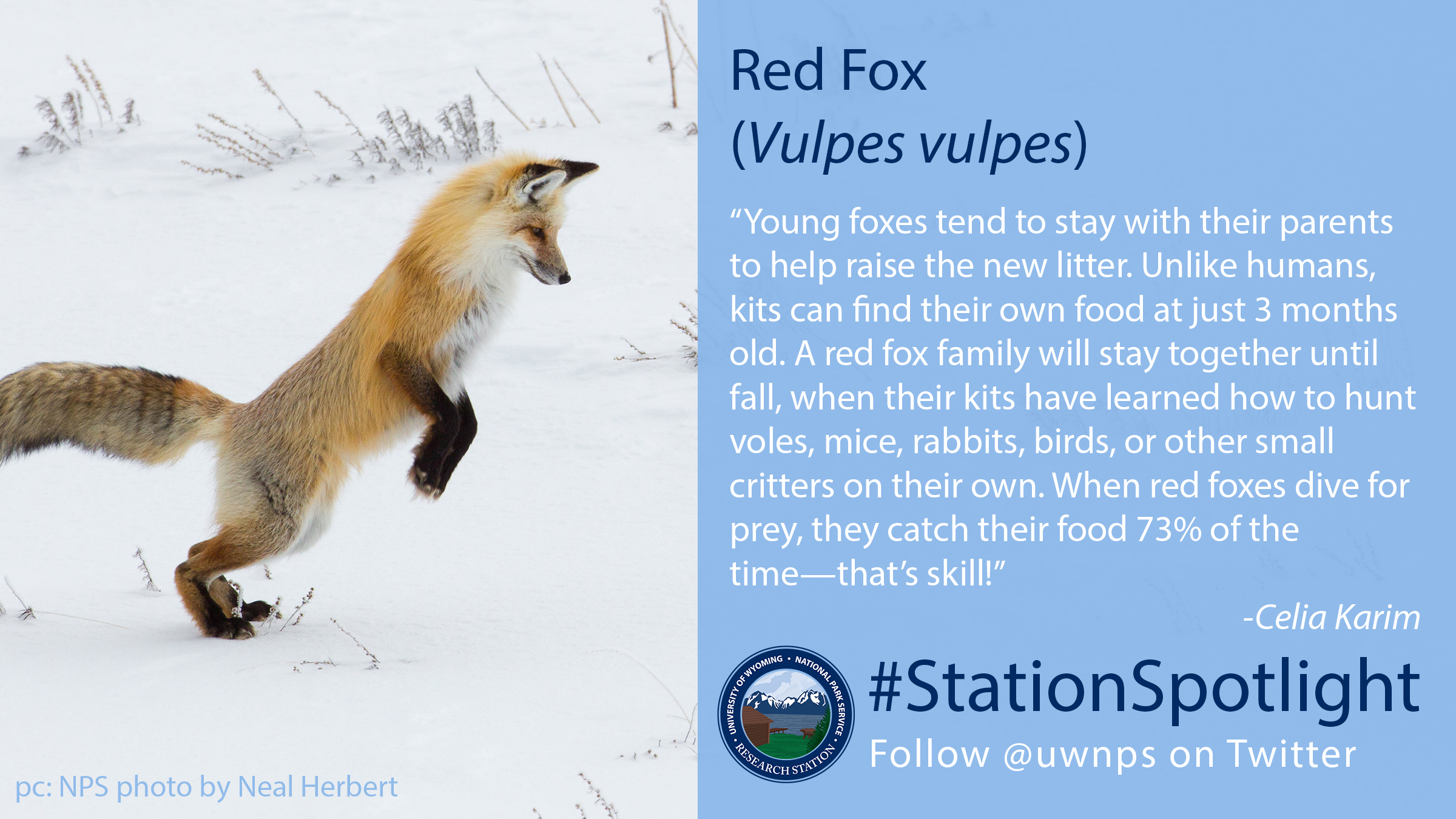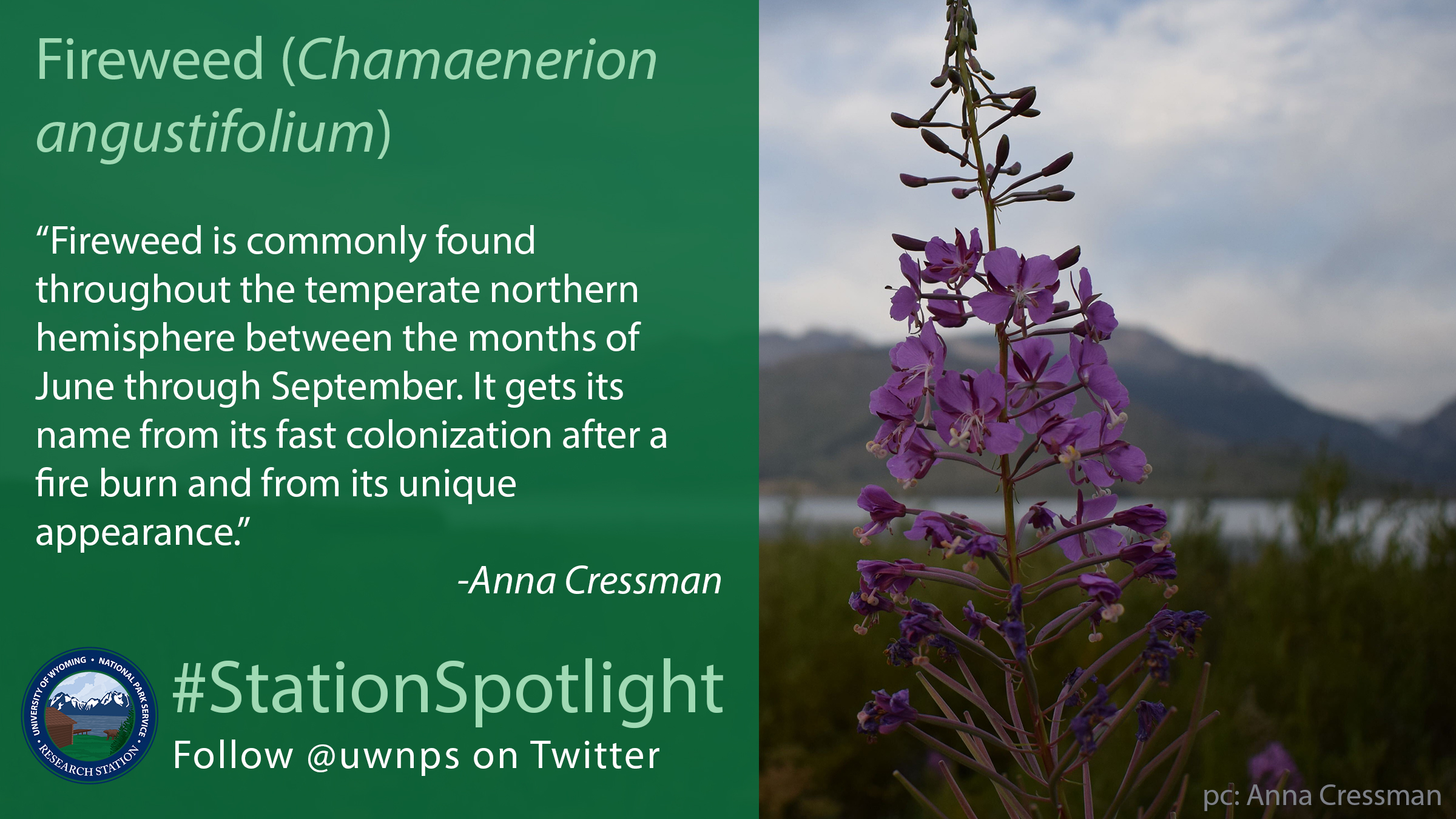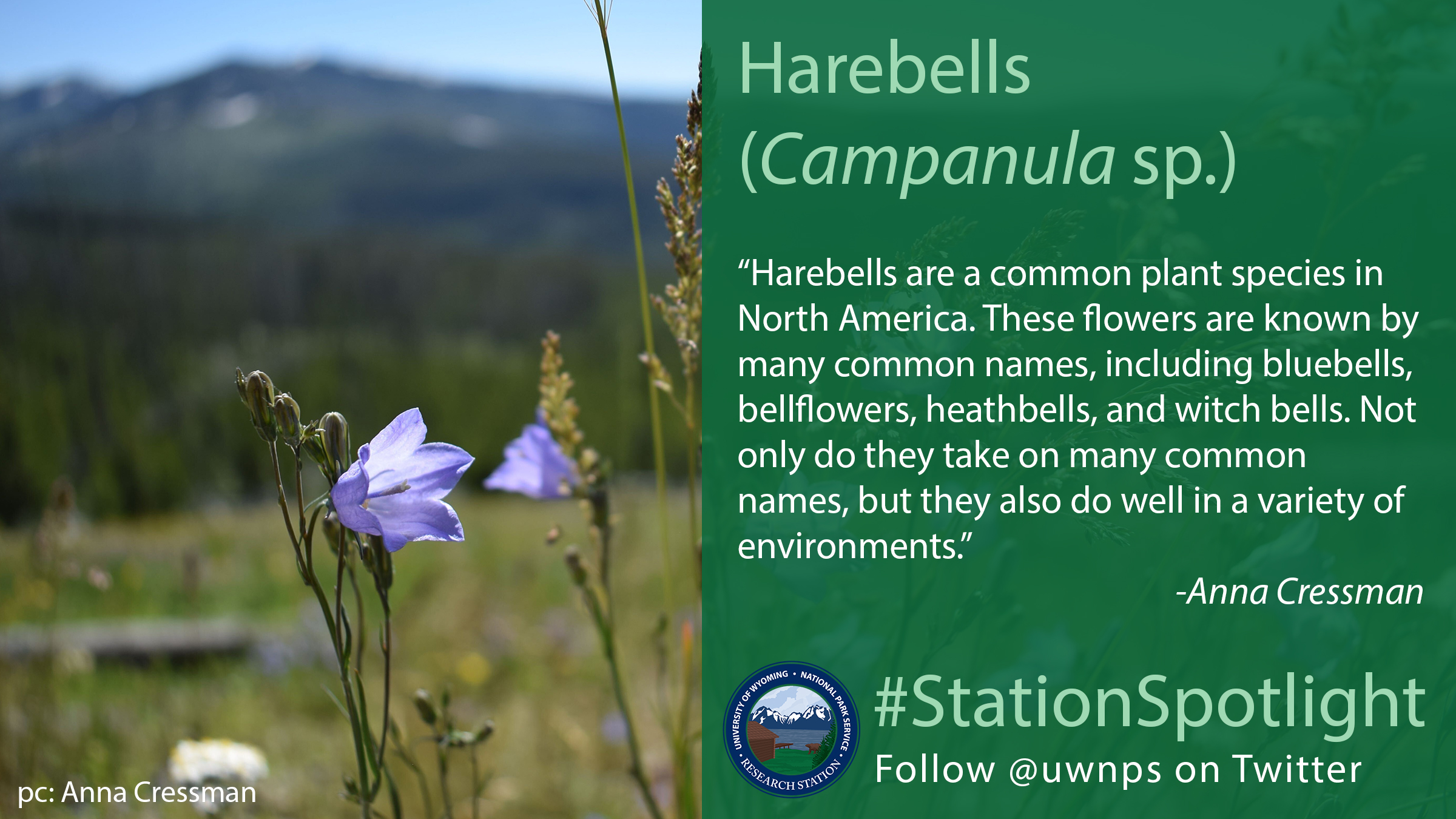
Coyote (Canis Latrans)
They are so common in the US that they have earned many nicknames for themselves—song dog, American jackal, prairie wolf, brush wolf—but most people refer to them as coyotes (Canis Latrans). You may have noticed that coyotes don’t usually run around in packs and are typically alone or with one other coyote. You can hear their piercing howl at both dawn and dusk. In areas with less people, they will usually hunt during the day; in more populated areas, they tend to hunt more at night. They hunt small rodents, occasionally elk calves, birds—even large swans—and feed off dead carcasses. Adult coyotes reach a maximum height of 2 ft tall usually weighing 30-40 lbs—this stature allows them to run up to 40 mph! Their coat colors vary based on location and may be a combination of grey, tan, and reddish hues. Coyotes in the Greater Yellowstone Ecosystem (GYE) have grown used to humans because of the high visitor rate to the parks, which have become places they can get food scraps or even handouts. Park rangers urge tourists not to feed wildlife because it fosters a reliance on humans and can initiate animal aggression.
Coyote populations declined by about 50% after wildlife officials reintroduced wolves to the GYE in 1995. However, GYE coyotes are now beginning to adapt to life with wolves. Coyotes inhabit a much greater area than wolves, they are all over the US—including cities. The state of Wyoming considers coyotes vermin, and they can be shot or captured without any restriction. Evidence suggests that this negatively affects the ecosystems they are a part of. Coyotes are fun animals to watch roam the parks and maybe you can see them pounce for prey!
Written by Celia Karim
PC: Anne Guzzo









